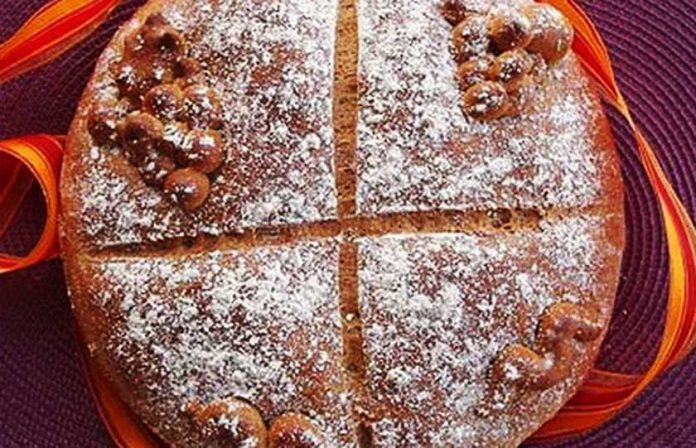The Christ bread of Microsia was heptazymo or fatazymo, it goes to say fermented seven times. In the Adramytinos gulf, across the northern and eastern Lesvos they "caught" the yeast long before kneading with "robitho juice" and basil!
Records from Asia Minor refugees in Lesvos, they mention that the chickpeas were soaked in holy water and basil.
It was then left for seven days next to the icons, followed by infusing in a tulpan. What was left over was not thrown away, but was given to the poor (SS: to the hens he goes to say)».
Next was the first kneading with some flour, in order to make a soft and layered dough. This dough was "sealed" with their hands and left covered in a warm place "to rise". Overall, they puffed the dough in the same way, adding water and flour each time.
The seventh time a little oil was added, herbs (nutmeg, cinnamon) and a little sugar. After the seventh kneading, the dough was decorated with walnuts and sesame seeds, while in the southernmost parts of the Adrammitin gulf near Ayvali, they were also sealed with "etelia", a wooden round seal with the double-headed eagle.
Eaten on Christmas morning after church with the first bite dipped in sweet mulled wine.
Until his last bite, no knife was inserted into Christopsomos, and any crumbs also went "to the uprights"!
This Asia Minor custom is still observed today in many houses on Lesvos, especially in those with residents of refugee origin.
